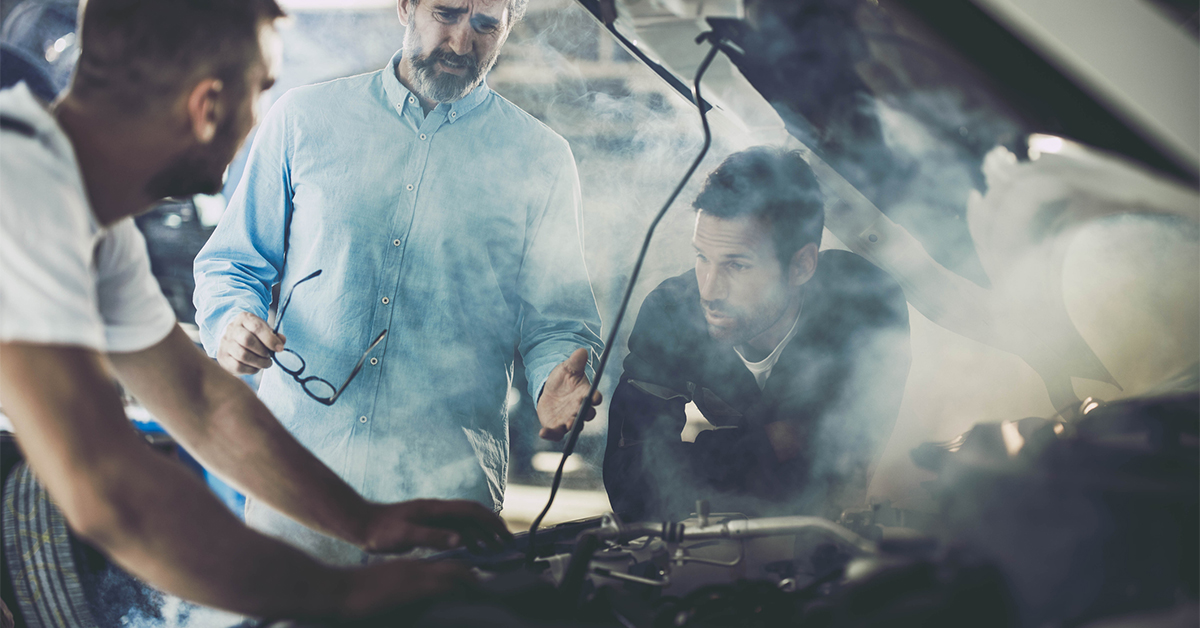It used to be a common sight during the summer holidays: cars pulled over to the side of the road, bonnet up, overheated and going nowhere. While it’s not such a problem today with better-built vehicles, car radiator repairs are still a vital service we provide, and one that must be done right – lest you want to wind up on the side of the road, too.
Here’s what you need to know about your car’s cooling system and what can still go wrong.
How do car radiators work?
A car’s engine generates power by burning fuel and utilising the motion of its various components. However, this power and movement produce significant heat within the engine. This heat must be vented effectively to prevent overheating, which can cause severe damage.
The car’s cooling system, which consists of a radiator, liquid coolant, hoses, a fan, and a thermostat, plays a vital role in removing excess heat from the engine. The coolant circulates through the hoses, flowing from the radiator to the engine, where it absorbs the excessive heat and then returns to the radiator.
When it reaches the radiator, the hot liquid coolant passes through thin metal fins, transferring heat to the surrounding air. This process is aided by the cool air entering the car’s grille. In situations where the vehicle is stationary, such as in traffic, the system’s fan helps reduce the temperature of the heated coolant and expels hot air from the car.
Following its passage through the radiator, the coolant continues circulating through the engine. This continuous heat exchange cycle ensures the engine maintains an optimal running temperature and prevents overheating.
Why might I need a car radiator repair?
- Blockage
The coolant in your engine makes thousands of circuits at high pressure, often picking up fragments along the way, such as dust or flaked-off bits of metal. Too much, and this residue can build up and clog the radiator, preventing the coolant from moving through it freely and letting off its heat. Old coolant fluid can be nasty as it gets thicker and has been around long enough to pick up plenty of material.
- Corrosion
Anything made of metal (like your car’s radiator) is at risk of corrosion. If the radiator begins to rust, it will probably start at the fins. This is a big problem because the fins increase the surface area for the coolant to flow over, giving it more chance for heat exchange. As the fins degrade, so does your radiator’s ability to do its job correctly.
- Damage
The radiator is located at the front of the engine, so it can take advantage of the cooler air rushing through the grille when you’re moving. But this location also makes it vulnerable to anything flying through the grilles and into the engine. It doesn’t have to be big; a small stone can be enough to puncture the radiator, causing you to leak coolant and quickly overheat.
- Faulty parts
As with any system, all the parts must be in working order to do the required job. A faulty thermostat, leaking hoses and pipes, broken fans and pressure caps that can’t handle the pressure or are all able to render your radiator useless.
Prevention is the best medicine when it comes to car radiator repairs.
As with many car issues, the problem is often signalled ahead of time. The best way to ensure you never need a car radiator repair is by having regular, scheduled car services. Your cooling system is completely checked at every one of our performances. We ensure all components are in good nick and replace the coolant fluid if necessary.
Don’t wait for the summer break – you might end up spending a nostalgic hour or two on the side of the road, watching everyone else zoom past, headed, no doubt, for the beach.
